Rathore Pooja products Making dhoop & agarbatti out of attar perfumery waste
0 comments



The trend of making agarbatti and dhoop from flowers offered in temples is something new. However, this is not entirely true. For over three decades Sonu Rathore who owns Rathore Pooja Pvt. Ltd. is doing this. Their company is extracting perfume and attar from sandalwood and flowers. The leftover waste is used for making agarbattis. Sonu Rathore runs this business from Kannauj (UP). Talking to Sugandh India, Sonu remarked; The city, as you know, is the Fragrance capital of India. It has been so for more than a thousand years. Albeit this fact, Kannauj does not figure anywhere in the agarbatti industry. He said his brother Ashok started this business. Tulsi Dhoop was their first brand. He said a lot of waste got generated during the extraction process. My brother found that this waste can generate additional revenue. That’s how he started making dhoop and agarbatti. Our company owns the first mover’s advantage. The trend that you see today, we did it 31 years ago. Today, our brands are running successfully. Speaking on the challenges, he said; Acute shortage of Kassa powder is increasing the manufacturing cost of agarbatti. Kassa is a raw material required in agarbatti making. The powder is derived from the bark of the babool tree. Today this powder is used excessively by plywood manufacturers and brick kiln owners.
Describing their family business, Sonu told Sugandh India that Late Shri Ramswaroop Rathore, his father and Munnu Lal Rathore, his uncle started ‘Rathore Udyog’ in 1986. The credit goes to his father and uncle for identifying waste as a potential revenue influencer. He started researching raw materials used for making attar and perfumes. Eventually, my uncle moved away and created his brand. Sonu remarked; that was a time when incense brands like Dev Darshan and Hari Darshan ruled the roost. Rathore Udyog products began gaining popularity in the late 80s. Thanks to high-quality dhoop and agarbattis delivered at the most competitive rates, their products added competition to established brands in Western UP. Although the company enjoys a good market in UP, Eastern UP is where the focus is today. The company extended its market into MP and some parts of Uttarakhand. Bihar is next on the cards. Having deep gratitude for his birthplace, he remarked Kannauj in itself is a brand. The name speaks volumes about its heritage and credibility. That is the reason our products sell so smoothly wherever they move.
Informing Sugandh India about the UP incense market, Sonu Rathor said— It is the largest market known to us. It is even bigger than; Delhi, Rajasthan, Uttarakhand, Madhya Pradesh, Jharkhand and Bihar combined. He said that the trend of dhoop is increasing rapidly in Western Uttar Pradesh. Conversely, Agarbatti holds the market in Central and Eastern UP. Punjab is also growing as a dhoop market. He remarked the consumer base in UP is steadily catching up with the premium market. Customers now prefer 50₹ and 100₹ a packet of agarbattis over 10₹ and 20₹ agarbatti packets. Dealers and distributors in rural areas are also getting an overwhelming response in retailing 50₹ and 100₹ MRP agarbattis.
The Rathore-51 and Rathore-101 brands of agarbattis are in such demand, remarked Sonu, that they are; unable to fulfil orders. Growing demand for traditional wet dhoop is visible in UP. Rathor’s 20₹ zipper pack is the most in-demand wet dhoop, reported Sonu. The company will launch a series of agarbatti products in 400g packaging by the first of September. Aahuti— A brand of havan samagri in; 50g, 100g, 250g and 500g shall launch soon. The same shall be sold loose in one and five kilos. Excessive demand for dhoops coupled with staggering competition and rising prices of raw materials is spoiling the quality and quantity. This is not good news, remarked Sonu. Our company is doing everything to maintain quality standards.


Venue : Mumbai
Date 12th and 13th April 2025